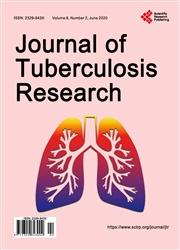Pulmonary Mycobacterium avium Complex Disease Requiring Differentiation from Recurrence of Lung Cancer during the Follow-Up Period for Lung Cancer
引用次数: 1
Abstract
Case 1 was a 49-year-old woman who visited with a dry cough. She had an underlying disease of lung adenocarcinoma and received cancer immunotherapy because of an ALK-positive response and several cancer chemotherapies. The clinical effect was a complete response. Chest CT was performed because of continuous dry cough, and a new tumor shadow was recognized in the lingula portion of the left upper lobe. We performed CT-guided lung biopsy and could aspirate pus-fluid. The culture test for acid-fast bacilli was positive and the causative microorganism was identified as Mycobacterium avium by the DDH method. The final diagnosis was pulmonary abscess due to M. avium. Treatment using combined chemotherapy including CAM was performed and a good clinical response was obtained. Case 2 was a 67-year-old man who had a past history of surgical resection of lung adenocarcinoma eight and two years ago and received several cancer chemotherapies and radiation therapy. Because a new nodular shadow appeared in the right middle lobe one year ago and showed strong positivity on PET/CT, surgical resection was performed with the suspected recurrence of lung cancer. Subsequently, the histological diagnosis was epithelioid granuloma and a culture test of acid-fast bacilli was positive, with the identification of Mycobacterium intracellulare by the DDH method. Combined chemotherapy was not performed because the lesion was completely resected. Afterwards, a new nodular shadow appeared in the left lower lobe again and bronchoscopy was performed. Because M. intracellulare was isolated from the local specimen, we diagnosed the patient with recurrence of pulmonary MAC disease and combined chemotherapy including CAM was performed for one year. Finally, the nodular lesion disappeared. It is difficult to differentiate pulmonary MAC disease from lung cancer. Therefore, careful follow-up of patients with lung cancer while keeping in mind the possible complication of pulmonary MAC disease is necessary.癌症Follow-Up期需要鉴别癌症复发的禽肺分枝杆菌复合病
病例1为49岁女性,就诊时伴有干咳。她患有肺腺癌的潜在疾病,由于ALK阳性反应和几种癌症化疗,她接受了癌症免疫疗法。临床效果完全缓解。由于持续干咳,进行了胸部CT检查,在左上叶舌部发现了一个新的肿瘤阴影。我们进行了CT引导下的肺活检,可以吸出脓液。抗酸杆菌培养试验呈阳性,DDH法鉴定病原微生物为鸟分枝杆菌。最终诊断为禽分枝杆菌引起的肺脓肿。采用包括CAM在内的联合化疗进行治疗,取得了良好的临床疗效。病例2是一名67岁的男性,有8年和2年前肺腺癌手术切除史,曾接受过几次癌症化疗和放射治疗。由于一年前右中叶出现新的结节影,PET/CT显示强阳性,故对怀疑复发的癌症进行了手术切除。随后,组织学诊断为上皮样肉芽肿,抗酸杆菌培养试验呈阳性,通过DDH法鉴定为细胞内分枝杆菌。由于病变已完全切除,因此未进行联合化疗。之后,左下叶再次出现新的结节状阴影,并进行了支气管镜检查。由于细胞内分枝杆菌是从局部标本中分离出来的,我们诊断该患者为肺MAC疾病复发,并进行了一年的包括CAM在内的联合化疗。最后,结节性病变消失。肺MAC病与癌症的鉴别比较困难。因此,对癌症患者进行仔细的随访,同时牢记肺MAC疾病可能的并发症是必要的。
本文章由计算机程序翻译,如有差异,请以英文原文为准。
求助全文
约1分钟内获得全文
求助全文

 求助内容:
求助内容: 应助结果提醒方式:
应助结果提醒方式:


